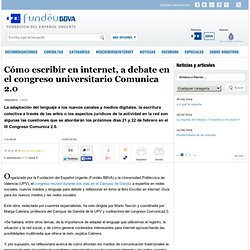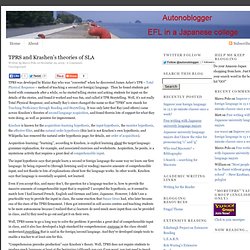Zoom
Trash

Gorgonsito: La pizarra digital Vyew. J.M. Grenier. 150 herramientas gratuitas para crear materiales didácticos on line. Más de 150 herramientas gratuitas para crear materiales didácticos on line Generadores de cuadernos, libros y publicaciones digitales Cuadernia online (Consejería de Educación y Ciencia de Castilla-La Mancha).

Herramienta fácil y funcional para la creación y difusión de materiales educativos digitales. Permite crear de forma dinámica y visual cuadernos digitales que pueden contener información y actividades multimedia. Tal vez también te interese visitar el portal de recursos de Cuadernia donde encontrarás diversas versiones de esta herramienta para descargar tutoriales, un foro, novedades, actividades, etc.Tikatok es una aplicación en línea que permite de forma muy sencilla la creación de libros virtuales que contengan imágenes y textos. Español lengua extranjera. Cómo escribir en internet, a debate en el congreso universitario Comunica 2.0.
Organizado por la Fundación del Español Urgente (Fundéu BBVA) y la Universidad Politécnica de Valencia (UPV), el congreso reunirá durante dos días en el Campus de Gandía a expertos en redes sociales, nuevos medios y lenguaje para debatir y reflexionar en torno al libro Escribir en internet.

Guía para los nuevos medios y las redes sociales. Esta obra, redactada por cuarenta especialistas, ha sido dirigida por Mario Tascón y coordinada por Marga Cabrera, profesora del Campus de Gandía de la UPV y codirectora del congreso Comunica2.0. 18 FREE Web 2.0 Tools for Teachers. InShare31 The world of e learning is changing rapidly.

Recently, we have had an overdose of online tools that make teaching easier, apparently! So, we decided to get to the bottom and answer some of the most confusing questions an online teacher has. -How effective these tools are? -What are the free tools readily available that are effective? -Sharing Content through presentations, spreadsheets, videos, audio or simply sharing the screens-Assessing Student Performance with constant feedback-Collaborating with Students to engage in active discussions to foster better exchange of ideas and to be in a closer contact to understand different learning styles-Providing Live/Recorded Online Lecture Sessions (Audio/Video), tools that have been changing how online teaching works!
This whitepaper analyses the top tools for a better online classroom. You are now registered with WizIQ. Register to Download Or fill out the form below Name: Your Email: Create Password: Country: Account Type: Using OKMindMap for Moodle and Educational Purposes (Full video transcript) Welcome to Moodlenews.com A resource site for all Moodle-related news, tutorials, video, course content information and original resources. If you're new here, you may want to subscribe: RSS feed| Weekly Email Newsletter | Moodle News Twitter Thanks for visiting! Dr Ho of Kongju University has produced a series of Youtube videos that show the features of OKMindMap cloud-based service. In his latest June 2012 videos, Dr. Ho, or Won, as he prefers to be called by his first name, demonstrates how you can use OKMindMap his main software mind mapping tool.
Of special interest is the Moodle plugin for OKMindMap which means that Moodle users can benefit educationally from the various learning possibilities. I understand Dr. If you want to move your students’ learning experience up another notch, why not spend less than 15 minutes viewing the four-part videos? Part 1. Introduction Hello, this Dr. There are THREE use-cases which are available for using Mind Maps in the educational field. Part 2. TechSmith Blogs. QR Code Generator and Management with Tracking, Analytics and Support.
TPRS and Krashen’s theories of SLA. TPRS was developed by Blaine Ray who was “converted” when he discovered James Asher’s TPR – Total Physical Response – method of teaching a second (or foreign) language.

Then he found students got bored with commands after a while, so he started telling stories and asking students for input on the details of the stories, and found it worked and was fun, and called it TPR Storytelling. Well, it’s not really Total Physical Response, and actually Ray’s since changed the name so that “TPRS” now stands for Teaching Proficiency through Reading and Storytelling. It was only later that Ray (and others) came across Krashen’s theories of second language acquisition, and found therein lots of support for what they were doing, as well as pointers for improvement. Acquisition-learning: “learning”, according to Krashen, is explicit learning about the target language: grammar explanation, for example, and associated exercises and worksheets. “Comprehension precedes production” says Krashen’s theory.
Revistes allotjades al servei de Revistes Digitals (ReDi-UAB) Planning.